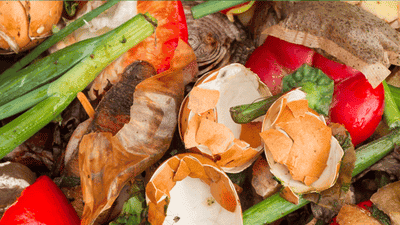
In a world where approximately 1 in 9 people are undernourished, it is deeply troubling to acknowledge that around 30% of all food produced globally ends up wasted. This staggering statistic highlights a critical issue within our food systems, where resources, labor, and energy are expended to grow food that never reaches the table. The consequences of food waste extend far beyond mere economic loss; they have profound environmental implications, contributing to greenhouse gas emissions, depletion of natural resources, and loss of biodiversity.
Food waste refers to food that is discarded, lost, or uneaten. It can occur at various points along the supply chain, from the farm to the consumer. The Food and Agriculture Organization (FAO) distinguishes between food loss and food waste:
According to the FAO, roughly 1.3 billion tons of food waste is generated each year, which accounts for about one-third of global food production. This wastage occurs at various stages:
Understanding the scope of food waste is essential in identifying the critical stages where interventions can be made to minimize loss.

One of the leading causes of food waste occurs before products even reach consumers. Agricultural and retail sectors often impose strict aesthetic standards for fruits and vegetables, favoring uniform sizes, shapes, and colors. This leads to perfectly edible produce being discarded simply because it does not meet visual criteria, resulting in significant losses from the farm.
Farmers may overproduce crops to hedge against market fluctuations or uncertain consumer demand. When supply exceeds demand, surplus food often goes unsold and is left to rot in fields or stored without adequate preservation measures.
In many regions, particularly in developing countries, inadequate infrastructure for food storage, transportation, and processing results in significant post-harvest losses. Poorly maintained roads, insufficient refrigeration, and inadequate storage facilities can lead to spoilage before food ever reaches consumers.
Many grocery stores adopt practices that contribute to waste, such as overstocking items to increase the likelihood of sales or implementing overly strict expiration policies. Promotions and discounts can also lead to bulk purchasing by consumers, resulting in excess food that may not be consumed.
At the consumer level, various factors contribute to food waste, including:
The consequences of food waste extend beyond merely lost calories. The environmental implications are vast and multifaceted:
Food waste is a significant contributor to greenhouse gas emissions. When food decomposes in landfills, it produces methane—a potent greenhouse gas that has a much greater warming potential than carbon dioxide. The FAO estimates that if food waste were a country, it would be the third-largest emitter of greenhouse gases in the world, just after the United States and China.
The resources used to grow, process, and transport food that ultimately goes to waste are staggering. For every calorie of food produced, vast amounts of water, land, and energy are consumed. According to estimates, approximately 25% of the world’s freshwater supply is used to produce food that is never eaten. This depletion of resources exacerbates challenges related to water scarcity and land degradation.
The production of food—especially monoculture practices—can lead to habitat destruction and biodiversity loss. When food is wasted, it represents not only the loss of the food itself but the biodiversity associated with its production. This undermines ecosystems and the services they provide, such as pollination, soil fertility, and pest control.
Food waste is an economic challenge as well. The FAO estimates that the global cost of food waste amounts to approximately $ 940 billion annually. This includes costs associated with production, transportation, processing, and disposal. As food prices increase due to resource depletion and climate-related challenges, reducing food waste can alleviate some economic pressures on consumers and producers alike.

Addressing food waste requires a multifaceted approach involving all stakeholders in the food system, from farmers to consumers. Here are some potential solutions:
Advancements in technology play a crucial role in tackling food waste across various stages of the supply chain:
Technologies such as precision agriculture can help farmers optimize resource use, reducing overproduction and waste. Through data analytics and smart farming practices, farmers can make informed decisions regarding planting, watering, and harvesting.
Retailers can utilize inventory management software that tracks expiration dates and stock levels, ensuring that older items are sold first and reducing the likelihood of waste.
Several apps and online platforms allow consumers to track food inventory, plan meals effectively, and donate leftover food to local charities. These technological solutions raise awareness while providing practical tools to reduce waste.
Smart refrigerators and storage solutions that can monitor and provide information on food freshness can help consumers make better decisions regarding food usage. This technology can assist in preventing spoilage and waste at the household level.

Food waste is a complex issue that involves multiple stakeholders within the food system. Addressing the challenge requires a concerted effort across production, processing, retail, and consumption. By understanding the reasons behind food waste and implementing solutions that engage everyone from farmers to consumers, we can significantly reduce the amount of food that is discarded.
Minimizing food waste not only contributes to a more sustainable food system but also has profound environmental, economic, and social benefits. In an era where food security and sustainability are critical, tackling food waste presents an opportunity to create a more resilient and equitable food system for future generations.
To make a meaningful impact, we must prioritize education, invest in infrastructure, reform retail practices, and encourage responsible consumer behavior. By working together to combat food waste, we can ensure that the resources devoted to food production are utilized wisely and equitably, contributing to a healthier planet and society.